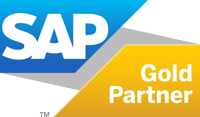The creation of a connected manufacturing system starts with a single, vital step: the digital implementation and control of production processes. The real benefits come when the production data is integrated with information from ERP and business systems. SAP Manufacturing Integration and Intelligence (SAP MII) is the system responsible for this integration and visualisation.
SAP MII: Functions and tasks
SAP Manufacturing Integration and Intelligence is a central information hub and therefore an important element of the SAP Digital Manufacturing Suite. It serves a broad range of functions and tasks:

Data integration with SAP ERP and third-party systems
Companies that digitalise the shop floor but gather information they obtain in silos and evaluate it in individual databases are losing out on a massive potential for optimisation, innovation and synergy. The value added is not evident until production data is combined with business data from existing ERP systems. And at this point, it no longer matters whether the information was collected via SAP ME or a third-party system.
Visualisation and
monitoring
SAP MII enables the real-time collection and monitoring of manufacturing data so that specific KPIs can be observed at all times and businesses can respond quickly to alarms and triggers. Information such as temperature and pressure readings or electricity consumption can be viewed on detailed dashboards along with many other measurements. Developers can also work with users, adopting a design thinking approach to create their own custom, intuitive UIs.
Real-time views and
analysis
In the IIoT, connected machines generate innumerable data points every second. The development tools provided by SAP MII support the visualisation of comprehensive IIoT scenarios in real time, revealing the connections between machines, workers, mobile devices, supply chains and production processes. In combination with SAP Plant Connectivity (Pco) to link up the technical infrastructure of the production plant, it creates a transparent picture of all production processes.
Shop floor
IT toolbox
SAP MII provides companies and users with many services for fast and simple development of applications in manufacturing. The areas of deployment are diverse and include Overall Equipment Effectiveness (OEE) management, process controlling, business logic, data services, message services, Manufacturing Data Objects (MDO) or a KPI framework that supports a realistic performance assessment.
SAP MII components
As the interface between the MES, ERP and third-party applications, SAP MII has two core eponymous components:
Integration
SAP is the central integration platform for combining and bundling data from different IT and production systems. From MES solutions such as SAP ME to ERP and third-party systems, SAP MII is the backbone of a connected production system linking all relevant applications and modules.
Intelligence
All of the important information comes together in SAP MII to create a “single source of truth”. In order to transform raw data into valuable information for making informed strategic business decisions, SAP MII provides companies with numerous functions that support monitoring, controlling and data analysis services.
What are the benefits of SAP MII
The strengths of SAP MII come to the fore in a KPI-oriented production landscape, where it serves as a flexible platform offering companies numerous benefits:

Standard integration
The integration of third-party systems and simplicity of connection to an existing SAP ERP environment mean that important information starts to flow quickly allowing a company to harmonise its value chains across all affected areas of the business.

Real-time transparency
What processes are running at optimum efficiency, and where is there headroom to improve? Are there certain recurring bottlenecks? The collection and analysis of manufacturing data in real time provides users with fast, meaningful answers.

OEE integration in real time
Integrated OEE and workflow tools help in fine tuning production processes whose inner workings have been revealed to obtain sustainable efficiency improvements for the entire plant.

Vertical integration
SAP MII provides decision makers in all business areas with relevant data – from the sensor to the boardroom. It is therefore a prerequisite for development of an overall strategy based on data.
Syntax – your specialist for SAP MII
Companies that want to tap into the full potential of their production systems using SAP MII need an experienced partner and SAP specialist like Syntax. We understand the requirements of manufacturing. As a reliable partner to medium-sized manufacturing companies for more than 30 years, we know what businesses need. We can deploy our expertise as an SAP Partner from the very beginning to create the best IT landscape. We have developed our own set of Syntax MES Templates based on SAP MII for this very purpose. They can be adapted for the requirements of individual projects, tailored to the relevant MES strategy and implemented and integrated quickly. The Syntax MES Templates support the following processes and functions:

- Operating data acquisition (ODA) – capture and feedback of good/bad quantities and evaluated employee/machine times
- Machine data acquisition (MDA) – capture of data from machines, including down times
- Capture of product faults (fault records) and work process interruptions plus feedback to SAP QM (inspection characteristic recording and quality reports)
- Visualisation of SOPs and documents
- Triggers of actions and events (e.g. SAP PM maintenance reports and notification via email)
- Production dashboards: OEE, plan/actual comparisons, machine status analyses
- Digital shift log book
FAQ: SAP MII
What is SAP MII?
SAP MII is SAP Manufacturing Integration and Intelligence. It is a standardised, flexible and scalable IT platform based on SAP Netweaver. Companies use SAP MII to integrate production processes managed by the MES with business processes in the back office, and to standardise and visualise the relevant data. As a central information hub, SAP MII therefore plays a core role in creating a connected production system.
Where is SAP MII used?
The need to integrate production and business data means that the functions provided by SAP MII are prerequisites for some of the innovative projects and aims of manufacturing businesses. Zero-error production is a good example. If that sounds very ambitious initially, the extensive transparency that SAP MII brings to all production processes allows companies to quickly pinpoint the exact workflows that are best suited to manufacturing of an article in terms of quality, quantity over time, and consumption of raw materials, components and media.
What components can be combined in SAP MII?
In addition to the main aspects of Integration and Intelligence, SAP MII can combine many other components, including:
- System management allowing the configuration of system-wide settings and monitoring
- Security services for the administration of access rights to system services and data servers
- Data services for the configuration of database connections
- Content development for access to the SAP MII Workbench, downloading user-defined report tags and user-defined Action SDKs as well as configuration of connection credentials for the SAP NetWeaver Development Infrastructure (NWDI)
- Messaging services to ensure copies of data that are sent to and from your plant systems to ensure that plant process data is not dependent on the availability of the ERP system
- Catalog services for creation, extraction, consolidation and (re)structuring of tags from various plant historian systems to produce a uniform tag catalog
- Alerts and KPIs to display alert status and actions, define alerts and resolve them depending on severity and status
- System resources include resources that can be uploaded or downloaded to enhance SAP MII functionality
- Energy monitoring and analysis to gather and evaluate energy data across various plants